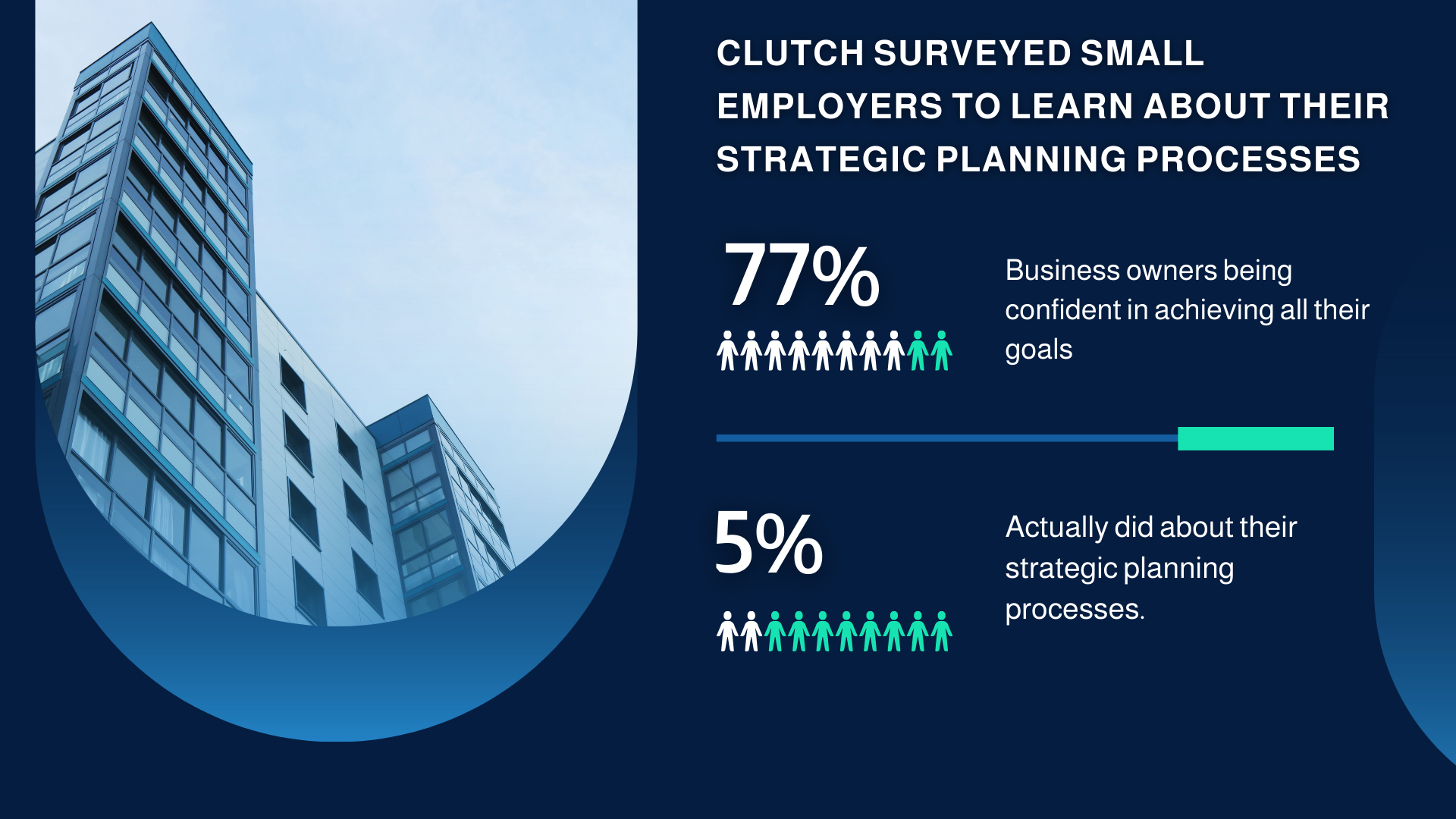
What are the Signs of a Toxic Work Environment?
Deciding to stay or leave a toxic work environment isn’t always straightforward. However, recognizing the signs is the first step toward resolution.


Marketing Consultant at Gotham Artists

Head of Marketing & People Ops at WeblineIndia

HR Manager at Studies Weekly
A company is only as good as its employees.
However, in this clash of skills, ideas, personalities, and goals, it takes a good leader to keep everything and everyone aligned with the company’s objectives.
Unfortunately, this is easier said than done.
As part of The Strategic Agility Project, MIT Sloan School of Management reveals a significant strategic disconnect among organizations’ top leaders. Although 97% of executives and middle management claimed to understand the company’s priorities, only a quarter could accurately list three of the five key objectives, and one-third couldn’t name even one.
This is not to say that such a vast percentage of leadership is “bad,” but there’s certainly a strategic misalignment that begins at the top and spreads across all levels of an organization.
Adopting a strategic leadership approach could be instrumental in refining how companies prioritize their goals. It improves objective clarity and resource allocation, enhances decision-making, and aligns departments. The lack thereof makes businesses vulnerable to changes in market dynamics, competitive pressures, and technological advancements.
Luckily, it’s a skill set that, more often than not, can be learned.
Below, we examine strategic leadership, its implications in the workplace, the benefits and challenges, and the skills required to adopt this mindset.
So, what is strategic leadership exactly?
There are many interpretations of what this means.
However, a recent article published by The Leadership Quarterly consolidates many complex definitions into one that defines this leadership style as “the functions performed by individuals at the top levels of an organization that are intended to have strategic consequences.”
These operations include making strategic decisions, engaging with stakeholders, managing human resources, motivating teams, overseeing procedures, addressing social and ethical issues, and more.
In other words, a strategic leader has many responsibilities beyond mere visioning, from governance and supervision to engagement and innovation.
Although many organizational leadership styles share similarities, strategic leadership is not confined to the other examples we explore in this article.
Strategic leadership transforms challenges into opportunities.
Today, as we navigate a fast-shifting economic and technological climate, the mindset becomes paramount for companies to remain competitive and adapt to changes.
Economically, there was a lot of uncertainty during and after the pandemic, from changes in the labor market and rising cost of living to global supply chain disruptions and inflation.
On the technological side, advancements like AI and automation are reshaping industries at breakneck speed.
In the middle of all this, companies are faced with inevitable changes.
Researching this impact, Clutch surveyed small employers to learn about their strategic planning processes. Their findings show that, despite 77% of business owners being confident in achieving all their goals, only five percent actually did.
Low flexibility and adaptability when this was a must show a lack of strategic guidance. Further proof is that only 15% of the respondents had a fully documented plan of their strategies, while 25% had none.
Seeing another major disconnect, this time between a company’s vision and its achievements, reinforces the need for a leader who can navigate today’s challenges, keep up with more than just trends, and find ways to weave them into the business model in a way that adds value.
Managing such shifts with agility and foresight makes strategic leadership so important today.

There are many forms of corporate leadership; some are good, while others are questionable. Below, we explore the most common examples to give a brief idea of the main differentiation with the strategic style.
Each style has its merits, and so too does strategic leading.
The main distinction lies in its focus on long-term vision, planning, and alignment with organizational goals, ensuring that day-to-day operations contribute to broader goals.
However, this requires a very specific skill set to achieve.
Leaders should possess an extensive and diverse skill set and know how to use the right combinations to make everyday decisions.
So, what makes a strategic leader?
“The most essential skill leaders need to develop is the ability to be strategically invisible—that is, mastering the art of guiding without micromanaging, influencing without being the focal point,” says Austin Benton, a marketing consultant at Gotham Artists.
He argues that leaders often overestimate their need to be visibly in control.
“Instead, creating an environment where team members feel ownership and autonomy to make decisions allows the strategy to grow organically. The leader becomes a behind-the-scenes architect, designing frameworks where initiatives align naturally with the organization’s mission,” explains Benton.
But beyond this, strategic leadership skills include a range of abilities, from strong communication to innovative vision. The following emerge as the most important to possess in the workplace:
Depending on the circumstances, a leader may need one or more of these to achieve an objective. Although this is an exhaustive list, the good news is that most strategic leadership skills can be developed and nurtured through practice and self-awareness.
When done right, this can bring many benefits to an organization.
“Effective strategic leadership boosts both performance and employee engagement,” remarks Vikrant Bhalodia, Head of Marketing and People Ops at WeblineIndia.
As Bhalodia points out, “When teams feel involved and see the big picture, they work harder and care more about outcomes. This leads to better results and a more motivated workforce.
In short, clear leadership turns strategy into action and action into success.”
Between its importance, standout characteristics, and necessary skills, strategic leadership introduces a wealth of benefits in the workplace.
For one, a clear vision and a well-defined strategy provide a better business perspective.
From there, it’s easier to set up a decision-making framework.
Implementing it correctly on all levels of the organization reduces the strategic alignment gap, which, as we saw, was especially prevalent among executive leadership.
According to The Strategy Crisis: Insights from the Strategy Profiler report by PwC, companies that get this right are growing faster than the industry’s average.
Consequently, this creates a competitive advantage.
Turning to innovation, adaptability, and identifying unique opportunities is especially important in navigating any challenge. Strategic leaders are also adept at allocating resources efficiently, ensuring that time, money, and talent are directed toward initiatives that align with the company’s goal.
Finally, prioritizing long-term success over (but not excluding) short-term wins leads to organizational growth.
PwC’s report confirms that, with the right strategy, employers are three times as likely to report above-average growth and twice as likely to report above-average profits.
This approach tackles another central pain point – allowing companies to align their vision with their achievements better.
The main disadvantage of strategic leadership is that it is a complex process, meaning it is not as widespread and requires time, resources, and extensive upskilling.
Once it’s in motion, other challenges can emerge.
Lack of continuous upskilling or failure to prioritize ongoing professional development to handle evolving challenges
A Harvard article on the topic names probably the best-known examples of strategic leaders, including Howard Schultz, former CEO of Starbucks and Amazon’s Jeff Bezos.,
Their leadership styles contain one or more strategic elements, from having a purpose to executing a long-term vision.
However, examples of strategic leadership can be found everywhere, and they don’t necessarily have to be on the scale of corporate giants like Starbucks or Amazon.
It’s the small employers who continually invest in their workforce, the innovative team leaders, the visionary middle managers, or the perceptive project leaders.
Companies of all sizes and industries can use and grow this potential by committing to ongoing development initiatives that empower employees and enhance their skills.
This is particularly significant in light of recent women in leadership statistics, which show that while more women are stepping into leadership roles, they still face unique challenges that require targeted support and development.
A 2022 survey by Training magazine and Wilson Learning Worldwide Inc. investigated the steps organizations were taking to develop effective leaders in the age of the Great Resignation.
The results showed several trends:
While the quit rate has calmed down since then, the importance of investing in strategic leadership skills remains just as relevant.
Effective listening, decision-making, team management, and vision-setting are essential in a dynamic environment. Therefore, many organizations turn to executive leadership coaching to develop these skills.
Additionally, executive communication coaching is crucial in empowering leaders to articulate their ideas effectively, fostering collaboration and engagement within their teams.
“From my experience, receiving buy-in from team members for strategic initiatives is all about how well your leadership team communicates and conveys the message to their team members,” explains Morgan Ostler, HR Manager at Studies Weekly.
“If team members understand the “why” behind a decision, they normally support the initiative even if they might disagree.
Involving strategic leadership in the workplace is a crucial skill for successful companies,” Ostler continues.
“The company’s innovation and monetary success aside, it gives team members a sense of purpose outside of their day-to-day tasks and can be a huge retention advantage over companies that might lack in this area.”
The bottom line is that strategic leadership is a complex concept with a simple purpose. It helps companies reach long-term goals using a “learn and adapt” approach built on different management styles, business practices, and skills.
Strategic thinking in leadership serves many purposes, from developing a clear vision and aligning it across all levels of the organization to problem-solving and creating contingency plans.
Research exploring the key skills leaders need for the future ranks strategic thinking first, with 70% agreeing on its importance.
However, only 30% of leaders report they received training for it.
The significant gap can be reduced with increased awareness of its benefits, reinforcing the importance of investing in workplace programs and choosing the right executive coaching companies to help employees develop strategic leadership skills necessary for long-term organisational growth.
Content Writer at Shortlister
Browse our curated list of vendors to find the best solution for your needs.
Subscribe to our newsletter for the latest trends, expert tips, and workplace insights!

Deciding to stay or leave a toxic work environment isn’t always straightforward. However, recognizing the signs is the first step toward resolution.

In the face of a slowdown in hiring, sweeping policy changes, economic uncertainty, and an increase in ghost jobs, securing employment seems more challenging than ever. However, there may still be a silver lining.

In an era of unprecedented corporate power, can we still safeguard the dignity of every worker amid the relentless quest for profit?

From enrollment trends to financial considerations, get a comprehensive view of the state of colleges with statistics that paint the landscape of higher education in the country.
Used by most of the top employee benefits consultants in the US, Shortlister is where you can find, research and select HR and benefits vendors for your clients.
Shortlister helps you reach your ideal prospects. Claim your free account to control your message and receive employer, consultant and health plan leads.